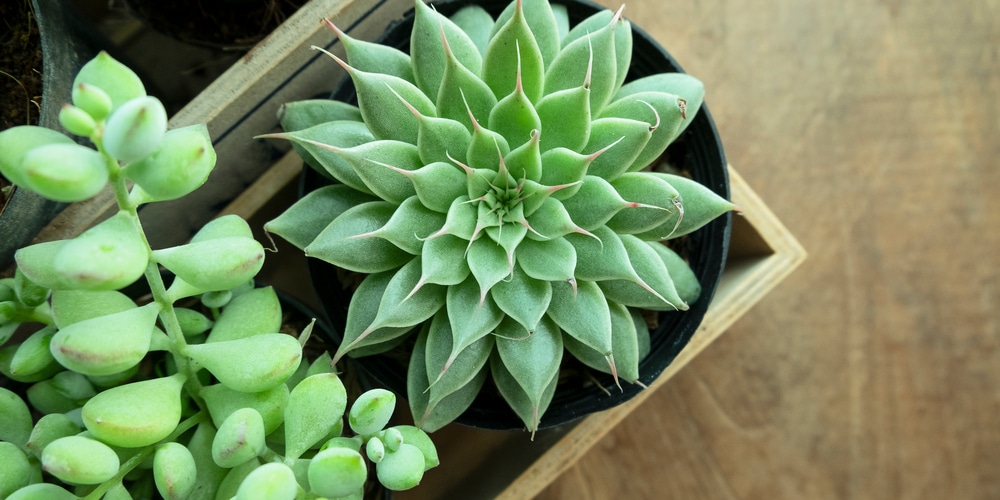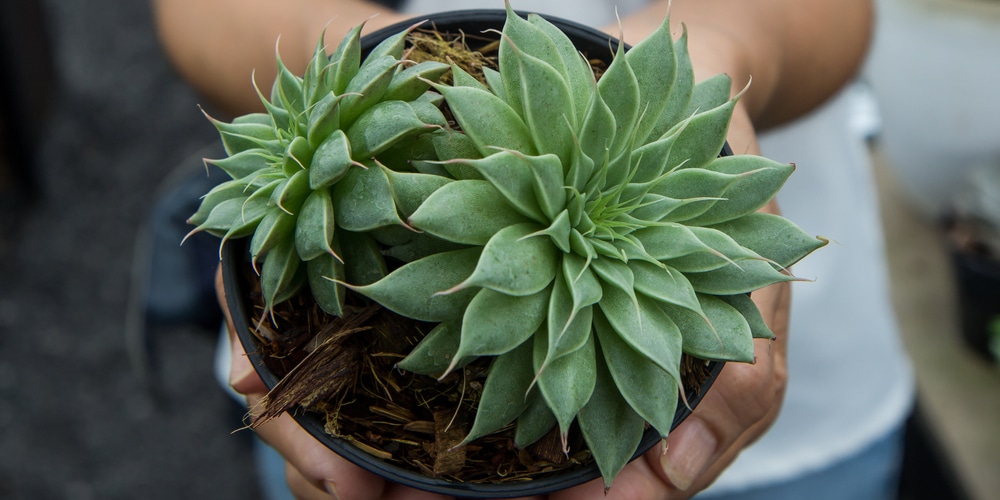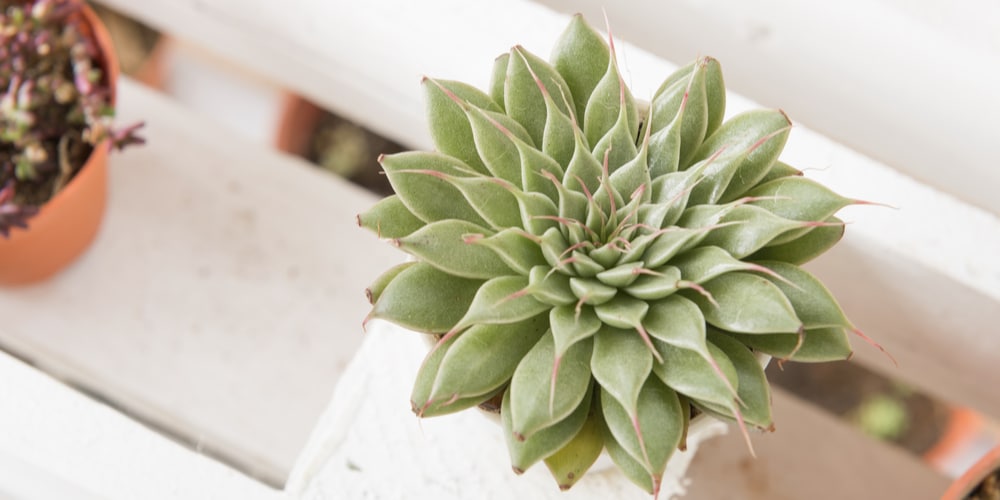A cross of Echeveria agavoides ‘Multifida’ and Graptopetalum filiferum, the ‘Silver Star’ has long and thin succulent leaves that are normally deep green. At the ends are hair-like bristles that can turn pink or red when exposed to strong sunlight.
| Botanical Name | xGraptoveria ‘Silver Star’ |
| Common Name | Graptoveria Silver Star |
| Plant Type | Perennial |
| Flower Color | Rose-colored flowers on stalks |
| Size When Mature | 3 inches |
| Bloom Time | Spring |
| Sun Requirements | Full sun to partial shade |
| USDA Hardiness Zones | 10 to 11 |
| Soil PH Range | 6.0 to 6.5 |
| Soil Type | Loose and well-draining |
| Water Needs | Low |
| Native Area | Mexico |
What you Need to Know About Graptoveria Silver Star
The Silver Star is a graptoveria hybrid succulent with long, spade-shaped green leaves and pointed tips that take on a red hue. The low-growing plant is easy to care for and can be placed in both indoor and outdoor settings.
Rose-colored blooms may appear in spring and last for several weeks. ‘Silver Star’ maintains its shape well and is non-toxic to pets and children.
How to Care for Graptoveria Silver Star
Here’s everything you need to know about growing and caring for a thriving xGraptoveria ‘Silver Star’.
Light
Silver Star graptoveria plants grow quickly and develop a characteristic red tinge when placed in a spot that gets direct sunlight. This could be a south-facing window, or outside where it gets unfiltered light every day. However, this isn’t a strict requirement since the succulent can also thrive in an environment that only gets a few hours of sun.
The graptoveria species is most active during the summer season and has a faster growth rate compared to other succulents of its class. You can do a quarter-turn of the plant when you care for an indoor Silver Star to get a balanced structure.
Water and Soil Needs
The ‘Silver Star’ graptoveria is hardier than most succulents and can survive the heat of the summer sun in zones 11. It also has a high level of drought tolerance which means the plant prefers to sit on dry soil than a constantly wet one.
Water only once or twice a month and when you see the green leaves slightly wrinkle. You’ll want to water deep to cover the whole pot or container so all the roots get wet. Succulents dislike wet and moist soil, so make sure the pot and soil can drain excess water quickly.
Silver Star plants can be potted in any soil pH, but usually prefer a slightly acidic medium.
Temperature Requirements
Graptoveria Silver Star does best in USDA zones 10 to 11. The succulent doesn’t like the cold and will quickly succumb if exposed to outside temperatures in the winter season. However, you won’t need to worry about your plant in the summer, even if you don’t water them that much.
‘Silver Star’ succulents can only tolerate temperatures of up to 10 degrees F. If your region dips to those levels, then it may be better to grow your Silver Star as a houseplant.
Fertilizer
The best fertilizer to use on a Graptoveria Silver Star is a balanced fertilizer product.
The succulent species welcomes the added nutrition in the soil now and then, but make sure that you don’t overdo it or the plant will suffer from fertilizer burn.
A half-strength feeding or two per growing season spaced two to three months apart is ideal for Graptoveria Silver Star fertilizer. You can also add a slow-release formula into the soil once a year.
Common Diseases
Succulents like the Silver Star are easy to care for because they need little watering and attention. Furthermore, they can be the perfect houseplants since graptoveria are largely unaffected by pests or diseases.
To avoid root rot it’s best to give your Silver Star a loose and well-drained soil mix that’s good for cacti and succulents. Loamy or clay-based soil is not good for Silver Star plants as it tends to be too wet for your plants to handle.
Graptoveria Silver Star Propagation
The best way to get a clone of a Silver Star is to cut off any smaller offsets and put it in another pot. This can be done by selecting a healthy specimen and using a sharp knife and cutting the base. Let the end dry for a few days and repot in a similar medium and container.
Alternatively, you can also get a leaf and allow a ‘pup’, or a smaller Silver Star plant to grow on it. Choose a healthy leaf specimen and be prepared to wait a month or two for it to grow into a whole new plant.
Twist off the leaf from the parent plant, allow the end to dry for a few days, and put it in a container that has well-draining soil.
Related Article: Graptoveria Fred Ives



